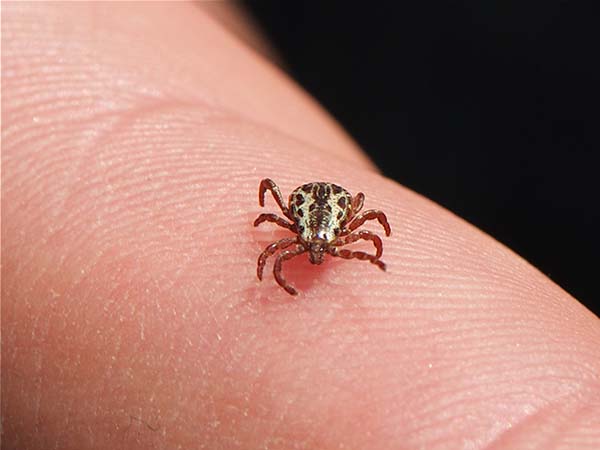Tips for Removing a Tick from Your Pet
|
Jul 9, 2025 - By the dedicated team of editors and writers at Newsletter Station.

|
Ticks are pesky little parasites that can be a nuisance for pets and their owners. These blood-sucking insects can transmit various diseases to your furry friends, making it essential to remove them promptly and safely.
This blog post will provide valuable tips for removing ticks from your pet to ensure their health and well-being.
- Gather your supplies
Before you begin the tick removal process, gather all the necessary supplies. You will need a pair of fine-tipped tweezers, a small container with a lid, rubbing alcohol, gloves (optional), and some antiseptic wipes. These items will help make the process more efficient and safe.
- Choose a well-lit area
Find a well-lit and quiet space to perform the tick removal procedure. This will help you see the tick clearly and calm your pet.
- Put on gloves (optional) < li>
While wearing gloves isn't strictly necessary, it can provide an added layer of protection, especially if you have any open cuts or sores on your hands. Additionally, gloves can help prevent the transfer of any potential tick-borne diseases from the tick to you.
- Grab the tick with tweezers
Using fine-tipped tweezers, grasp the tick as close to your pet's skin as possible. Be gentle but firm to avoid crushing the tick or leaving its mouthparts behind. Ticks are often small, so try to get a good grip to ensure you remove the entire tick.
- Pull the tick out steadily
Once you have a firm grip on the tick, pull it straight out with steady and even pressure. Do not twist or jerk the tick, as this can cause its mouthparts to break off and remain embedded in your pet's skin. Your goal is to remove the tick if it is intact.
- Dispose of the tick properly
Place the removed tick in a small container with a lid. You may want to add rubbing alcohol to the container to kill the tick. This will ensure that it cannot reattach to your pet or pose a threat to anyone else. Alternatively, you can flush the tick down the toilet, seal it in a plastic bag, and dispose of it properly.
- Clean the bite area
After removing the tick, clean your pet's skin with antiseptic wipes or a mild soap and water solution. This helps prevent infection and reduces the risk of any tick-borne diseases. Be sure also to clean your hands thoroughly.
- Monitor your pet
Monitor your pet closely in the days following tick removal. Watch for signs of infection or illness, such as redness, swelling, or a fever. If you notice any concerning symptoms, consult your veterinarian promptly.
- Prevent future tick infestations
Ticks can be found in various environments, including grassy and wooded regions. To reduce the risk of future infestations, consider using tick preventatives recommended by your veterinarian. These may include topical treatments, oral medications, or tick collars. Additionally, regularly check your pet for ticks, especially after outdoor activities, to catch and remove them before they become a problem.
Removing a tick from your pet may seem daunting, but it can be done safely and effectively with the right tools and techniques. Remember to be gentle, thorough, and cautious throughout the process. If you are unsure how to remove a tick or have concerns about your pet's health, don't hesitate to contact your veterinarian for guidance and assistance.
Unlock the Power of Email Marketing
Harness the potential of email marketing with Newsletter Station. Reach your target audience, drive conversions, and achieve your business goals.
|
More Blogs
| Sep 17, 2025 |
What Causes Reverse Sneezing in Dogs: Understanding this Common Canine Phenomenon
|
| Sep 10, 2025 |
Signs of Cancer in Dogs: What Every Pet Owner Should Know
|
| Sep 3, 2025 |
The Types of Tick Illnesses that Your Pet Can Get
|
| Aug 27, 2025 |
What Causes Pale Gums in Dogs: Understanding the Underlying Issues
|
| Aug 20, 2025 |
Common Causes of Stomach Problems in Pets
|
| Aug 13, 2025 |
The Most Common Causes of Bumps in Dogs and Cats
|
| Aug 6, 2025 |
Signs of Dehydration in a Cat or Dog: What Every Pet Owner Should Know
|
| Jul 30, 2025 |
Signs that Your Pet is Drinking Too Much
|
| Jul 23, 2025 |
What to Do If Your Pet Gets Stung
|
| Jul 16, 2025 |
How to Protect Your Dog's Paws: Tips for a Happy and Healthy Furry Friend
|
| Jul 9, 2025 |
Tips for Removing a Tick from Your Pet
|
| Jul 2, 2025 |
How to Know When It Is Too Hot to Walk Your Dog
|
|
|
|